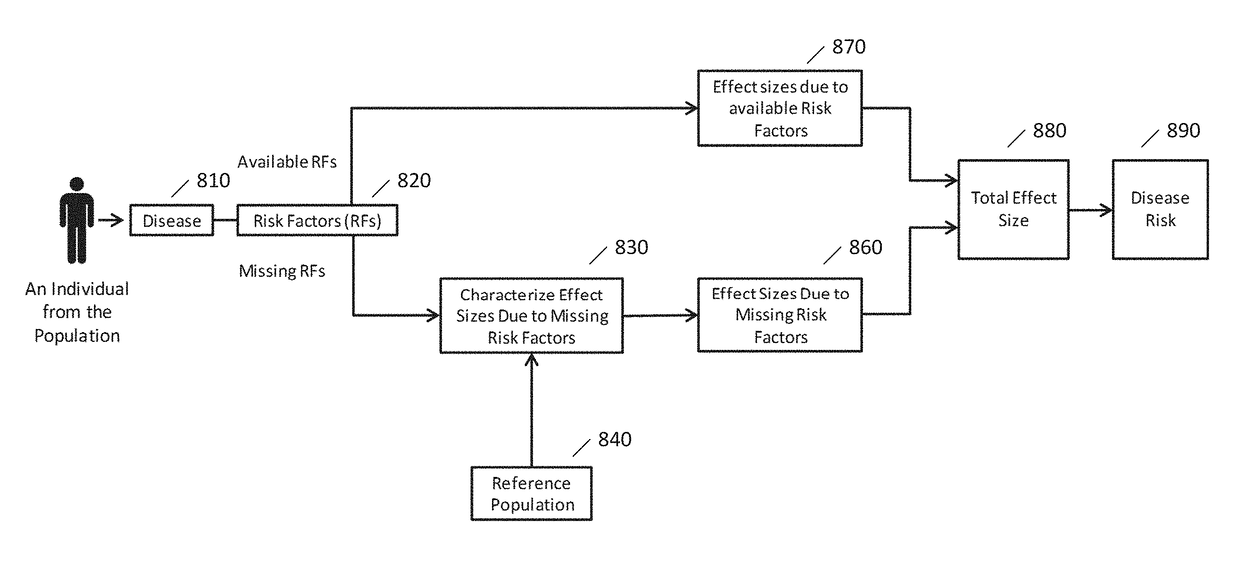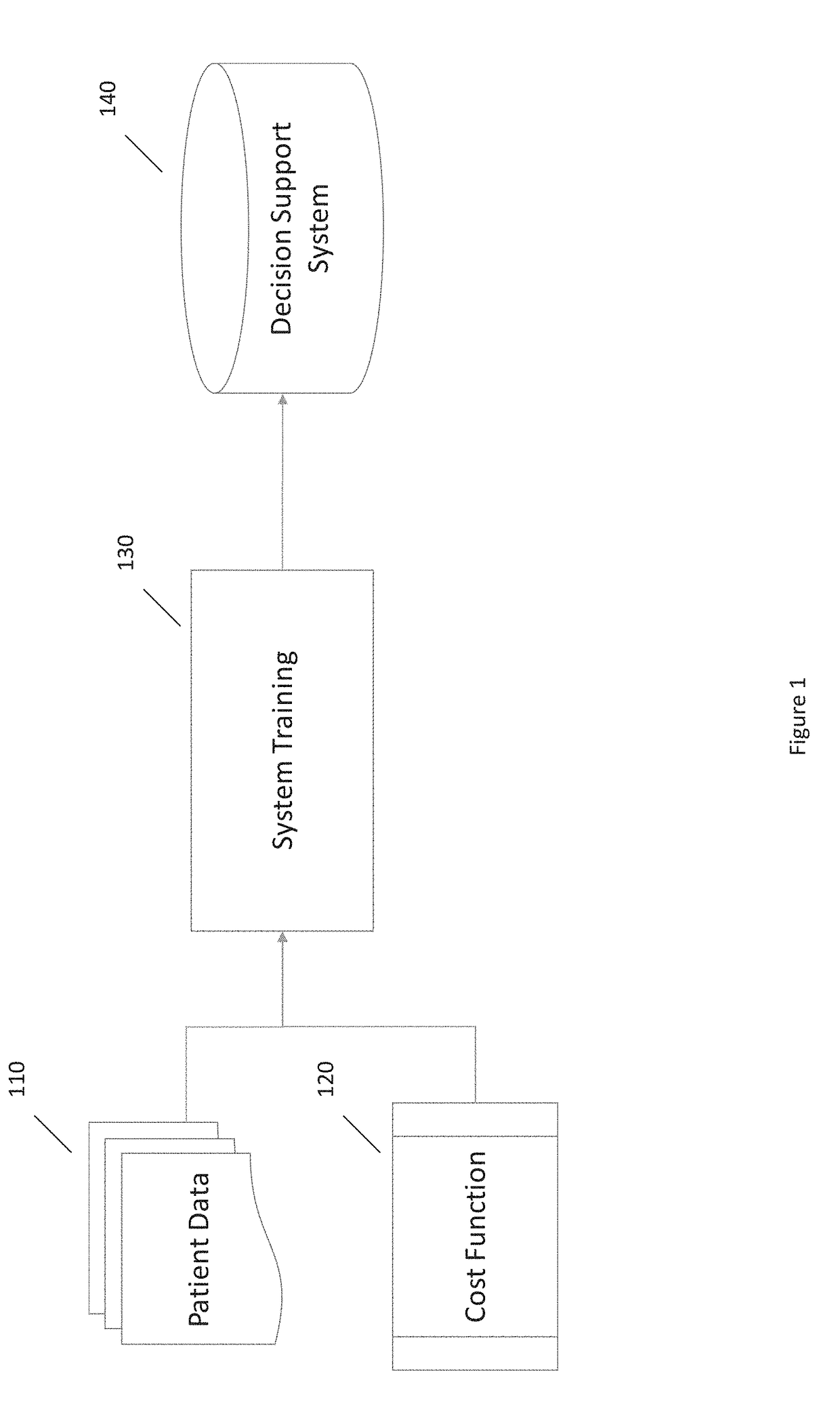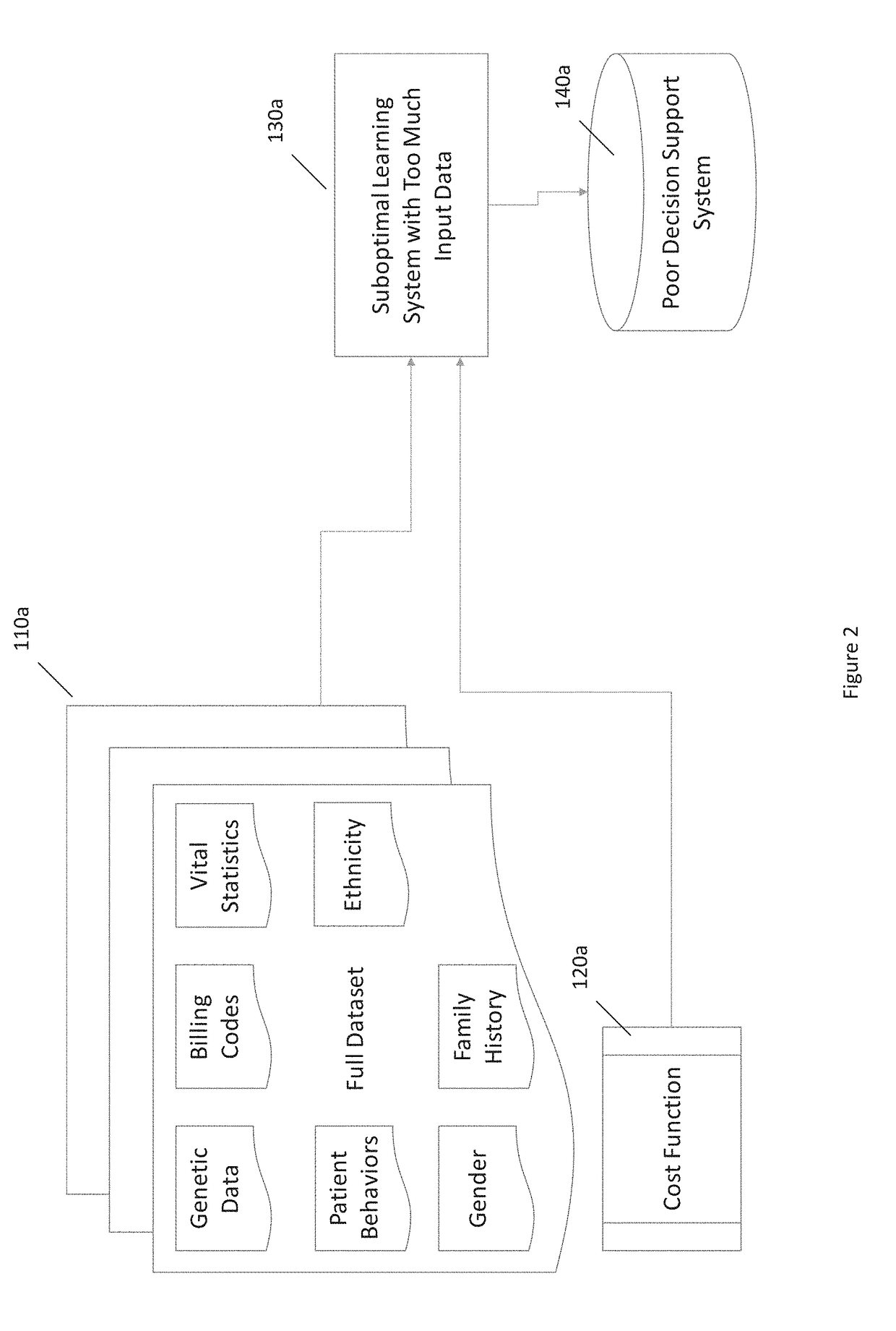Automated Evidence Based Identification of Medical Conditions and Evaluation of Health and Financial Benefits Of Health Management Intervention Programs
a technology of medical conditions and evidence based identification, applied in the field of automatic evidence based identification of medical conditions and evaluation of health and financial benefits of health management intervention programs, can solve the problems of difficult human optimal weighting in a decision, the inability to apply automatic systems, and the inability to consult a physician
- Summary
- Abstract
- Description
- Claims
- Application Information
AI Technical Summary
Benefits of technology
Problems solved by technology
Method used
Image
Examples
case 1
[0104 is the handling of missing risk factors in the absence of the intervention program. Assume that among the N risk factors for a certain disease, data for Na risk factors is available and data for Nm risk factors is missing. The effect size term can be broken into two parts: Πi=1NEi=(Πi=1NaEi)(Πi=1NmEi), where the first term corresponds to the risk factors with available data and the second term corresponds to the risk factors with missing data. For the risk factors with available data, the corresponding effect size Ei can be directly used. For the risk factors with missing data, a reference population can be used as a training data set in which all the risk factor data (or subset thereof) may be available to estimate the multiplication of the effect sizes due to the missing risk factors (that is, the second term in the equation above). Specifically, there may be a need for a statistical model—developed based on the reference population—in which the input parameters may be the k...
case 2
[0106 is the handling of missing risk factors in the presence of the intervention program. In this case, once again a statistical model may need to be developed based on the reference population. The difference is that before developing such a model, the effect sizes of the risk factors that are addressed by the intervention program may be updated in the reference population. This implies the estimation may be performed after accounting for the effect of the intervention program (FIG. 9).
[0107]In the above analysis, the output of the statistical model may be the multiplication of the effect sizes due to missing risk factors, which may vary depending on whether the intervention program is applied or not. However, the input to the statistical model may be the values of known risk factors before the intervention program is applied.
[0108]Consider the example mentioned in paragraph [00101]. Assume that the data for the two risk factors R1 and R2 are available (V1 and V2, respectively, as...
example 2
[0140 is identifying the best intervention for each individual in the population. Consider a clinic with available infrastructure to intervene with five risk factors: BMI, blood pressure, cholesterol panel, smoking and excessive alcohol intake. The cost and efficacy of the intervention programs may be known. The intervention programs can also be combined to address, multiple risk factors at the same time. In this case the total cost of the intervention program will be the sum of the cost due to the individual intervention programs. The proposed system and method may help the clinic to determine which intervention program or combinations of intervention programs are optimal for each individual given the cost and impact of the intervention programs.
[0141]Thus, according to certain embodiments of the present invention a system and method can evaluate the financial and health benefits of a health management intervention program. The analysis may be based on the collective effect of the ...
PUM
 Login to View More
Login to View More Abstract
Description
Claims
Application Information
 Login to View More
Login to View More - R&D
- Intellectual Property
- Life Sciences
- Materials
- Tech Scout
- Unparalleled Data Quality
- Higher Quality Content
- 60% Fewer Hallucinations
Browse by: Latest US Patents, China's latest patents, Technical Efficacy Thesaurus, Application Domain, Technology Topic, Popular Technical Reports.
© 2025 PatSnap. All rights reserved.Legal|Privacy policy|Modern Slavery Act Transparency Statement|Sitemap|About US| Contact US: help@patsnap.com



